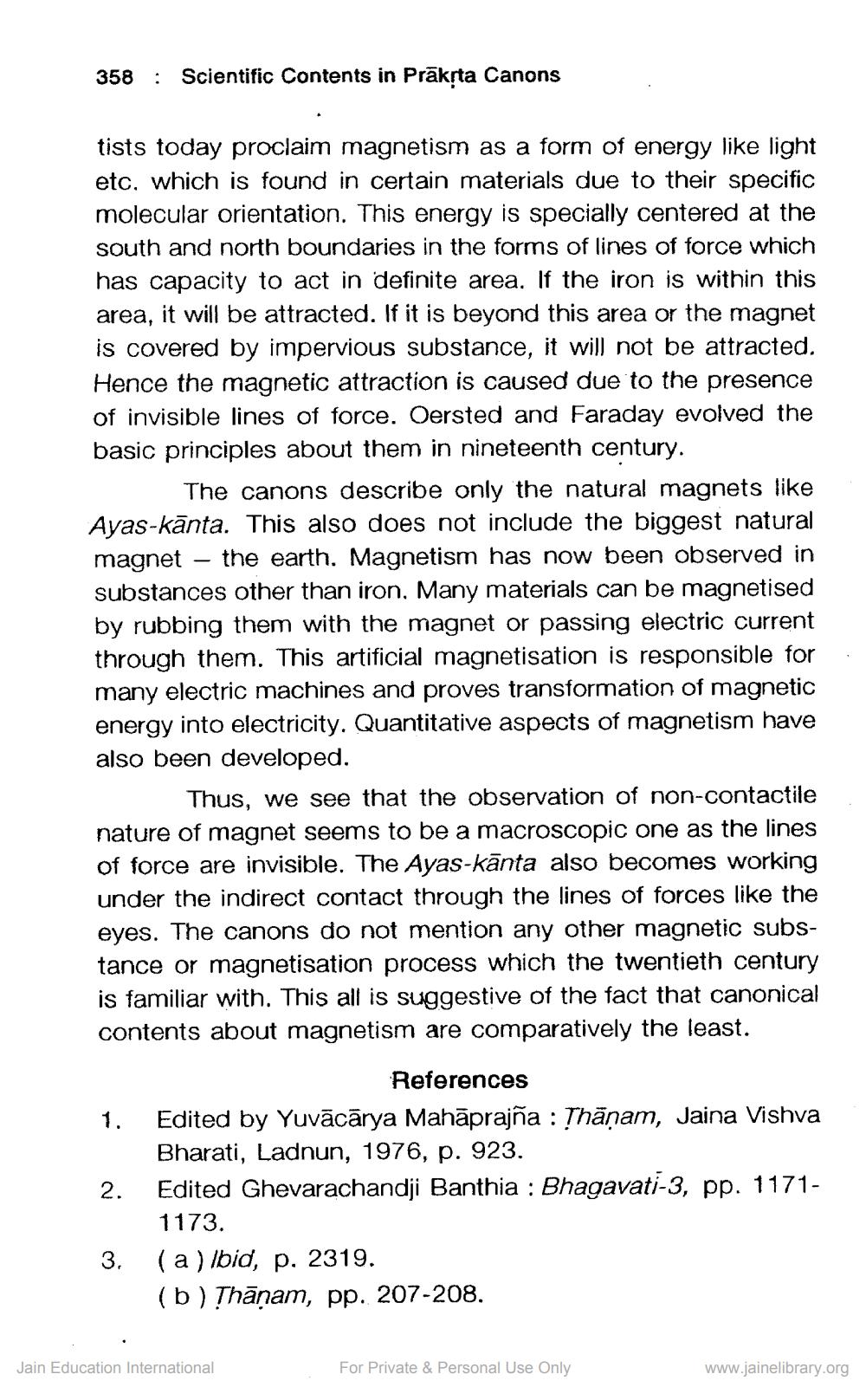________________
358 : Scientific Contents in Prākṣta Canons
tists today proclaim magnetism as a form of energy like light etc, which is found in certain materials due to their specific molecular orientation. This energy is specially centered at the south and north boundaries in the forms of lines of force which has capacity to act in definite area. If the iron is within this area, it will be attracted. If it is beyond this area or the magnet is covered by impervious substance, it will not be attracted. Hence the magnetic attraction is caused due to the presence of invisible lines of force. Oersted and Faraday evolved the basic principles about them in nineteenth century.
The canons describe only the natural magnets like Ayas-kānta. This also does not include the biggest natural magnet – the earth. Magnetism has now been observed in substances other than iron. Many materials can be magnetised by rubbing them with the magnet or passing electric current through them. This artificial magnetisation is responsible for many electric machines and proves transformation of magnetic energy into electricity. Quantitative aspects of magnetism have also been developed.
Thus, we see that the observation of non-contactile nature of magnet seems to be a macroscopic one as the lines of force are invisible. The Ayas-kānta also becomes working under the indirect contact through the lines of forces like the eyes. The canons do not mention any other magnetic substance or magnetisation process which the twentieth century is familiar with. This all is suggestive of the fact that canonical contents about magnetism are comparatively the least.
1.
2.
References Edited by Yuvācārya Mahāprajña : Thāṇam, Jaina Vishva Bharati, Ladnun, 1976, p. 923. Edited Ghevarachandji Banthia : Bhagavati-3, pp. 11711173. (a) ibid, p. 2319. (b) Thāṇam, pp. 207-208.
3.
Jain Education International
For Private & Personal Use Only
www.jainelibrary.org




